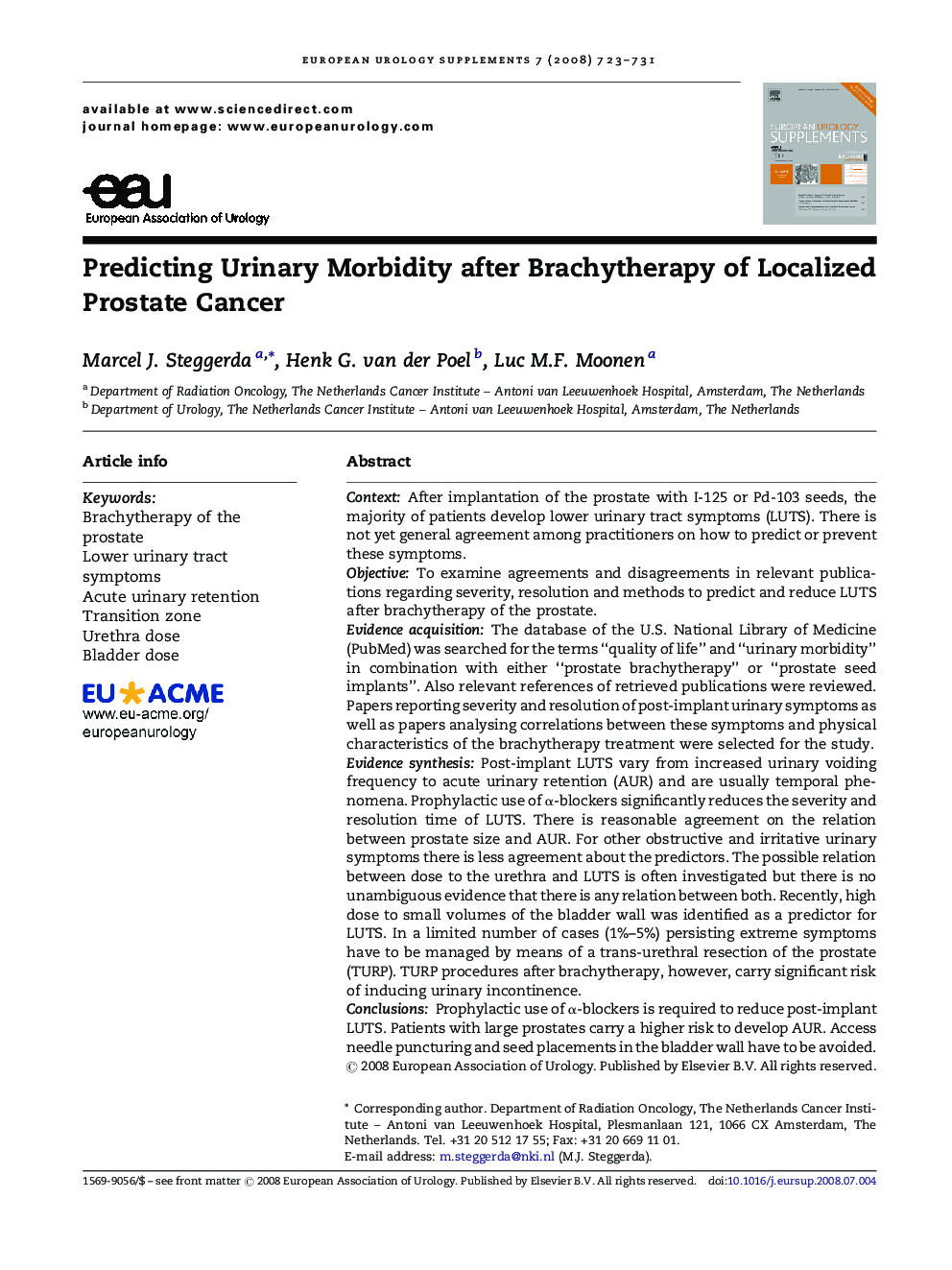| Article ID | Journal | Published Year | Pages | File Type |
|---|---|---|---|---|
| 3930869 | European Urology Supplements | 2008 | 9 Pages |
ContextAfter implantation of the prostate with I-125 or Pd-103 seeds, the majority of patients develop lower urinary tract symptoms (LUTS). There is not yet general agreement among practitioners on how to predict or prevent these symptoms.ObjectiveTo examine agreements and disagreements in relevant publications regarding severity, resolution and methods to predict and reduce LUTS after brachytherapy of the prostate.Evidence acquisitionThe database of the U.S. National Library of Medicine (PubMed) was searched for the terms “quality of life” and “urinary morbidity” in combination with either “prostate brachytherapy” or “prostate seed implants”. Also relevant references of retrieved publications were reviewed. Papers reporting severity and resolution of post-implant urinary symptoms as well as papers analysing correlations between these symptoms and physical characteristics of the brachytherapy treatment were selected for the study.Evidence synthesisPost-implant LUTS vary from increased urinary voiding frequency to acute urinary retention (AUR) and are usually temporal phenomena. Prophylactic use of α-blockers significantly reduces the severity and resolution time of LUTS. There is reasonable agreement on the relation between prostate size and AUR. For other obstructive and irritative urinary symptoms there is less agreement about the predictors. The possible relation between dose to the urethra and LUTS is often investigated but there is no unambiguous evidence that there is any relation between both. Recently, high dose to small volumes of the bladder wall was identified as a predictor for LUTS. In a limited number of cases (1%–5%) persisting extreme symptoms have to be managed by means of a trans-urethral resection of the prostate (TURP). TURP procedures after brachytherapy, however, carry significant risk of inducing urinary incontinence.ConclusionsProphylactic use of α-blockers is required to reduce post-implant LUTS. Patients with large prostates carry a higher risk to develop AUR. Access needle puncturing and seed placements in the bladder wall have to be avoided.
